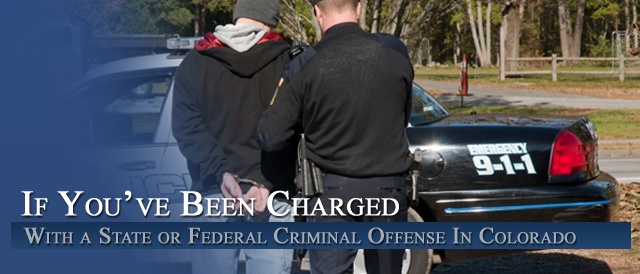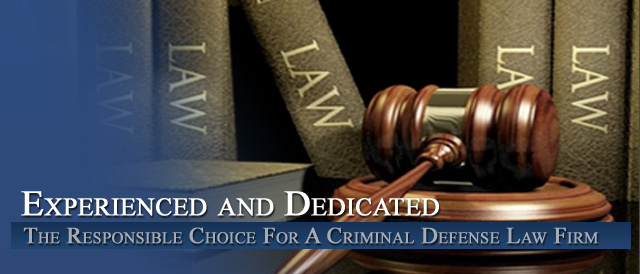




DUI / DWAI Cases in Colorado
- Can I be charged with drunk driving if the car is not moving?
- Why do the police make a suspected drunk driver do sobriety tests?
- What is the legal limit of alcohol for the crime of DUI?
“Driving under the influence” (DUI) and “driving while intoxicated” (DWI) are two names for the crime of drunk driving. Other statutory names for this crime are “operating under the influence” (OUI) and “operating while intoxicated” (OWI). The different names for the crime reflect differences in the state statutes that define the crime. However, all the statutes have the common purpose of punishing drunk driving and driving under the influence of illegal drugs.
The first element of the crime is driving” or “operating.” This language is designed to describe the level of control a person must have over the vehicle. In many states the vehicle does not actually have to be moving, and a person sitting behind the wheel of a car, whether or not the engine is running, can be convicted of driving or operating the car. Likewise, courts have found that a person steering a car being towed by another car could be tried for the crime of drunk driving. While passengers are generally not considered drivers or operators of vehicles, they can be if they grab the steering wheel.
The definition of “vehicle” is broader than “motor vehicle.” A vehicle can be any device for transporting people or goods. A motor vehicle, by contrast, requires that the device be powered by a motor. These definitions encompass cars, trucks, and motor boats. A question can sometimes arise when the vehicle is inoperable and a distinction is made between the vehicle’s being merely immobile and being inoperable. Another element of the crime is its location. Earlier statutes sometimes included explanatory phrases such as “on the public highways” which led courts to conclude the crime did not apply to persons who drove on private property, including parking lots. However, most statutes now simply require proof that the crime took place within the state.
The basic thrust of the drunk-driving laws is that they are to prevent operation of a powerful machine when a person is too intoxicated to have adequate control of the machine. The intoxication element is proved by one of two methods: (1) showing a certain level of blood alcohol or illegal drugs, or (2) showing the person was impaired. The first method is the one most often used. It does not rely on anyone’s observations of the defendant’s conduct, but rather on the results of a blood or breath test. A common statutory scheme requires a person suspected of being drunk or drugged during driving to give a sample of their breath or blood for testing. This so-called implied consent comes about because the statute provides for it whenever a person gets a driver’s license.
Once the sample is given, it is analyzed by a machine that measures the concentration of alcohol in a person’s blood. The most common limit for blood-alcohol content is .10 percent, although in recent years there has been a push to lower that limit to .08 percent. Any person who tests over the limit is legally intoxicated. The only way to challenge the charge is to show there was some failure in the test procedure, such as a malfunctioning machine, improper sampling, foreign substances in the mouth (in the case of a breath test), or improper preservation of the evidence.
In contrast, proof of impairment may be based on the facts and circumstances surrounding the incident. It relies on eye-witness testimony, statements of the defendant, and circumstantial evidence. The actual amount of alcohol in a person’s bloodstream is irrelevant since the focus is on whether the ability to drive has been impaired. Standard police tests for impairment include having the defendant walk a straight line with one foot placed precisely in front of the other; closing the eyes and standing with arms held out from the body and touching the tip of the nose when instructed; reciting the alphabet; and counting backwards.
Other signs of impairment are the officer’s observations of the defendant’s driving, which often leads to the stop. Driving too fast or too slow, weaving from lane to lane, and going through stop signs have all been used as evidence of impairment. A statement by a driver about how much he or she had to drink and how recently is also used as evidence of impairment when supported by testimony about the probable effects of that amount of alcohol ingested at that time on a person’s physical abilities.
Punishment for drunk driving has become increasingly severe in the past twenty years. In earlier days, people convicted of drunk driving often faced little real punishment if they had not injured anyone or destroyed any property. However, modern laws typically provide for significant jail or prison time and large fines for all offenders. First-time offenders may be given a “break”, such as a suspended sentence conditioned on treatment for substance abuse or attendance at drunk-driving school.
The penalty for second or subsequent offenses, however, often includes mandatory minimum jail or prison sentences that cannot be suspended or waived, and stiff fines. The punishment also usually includes revocation of driving privileges for a certain period of time, but it is important to note that the most severe restrictions on the offenders’ driving privileges usually come from the state’s administrative regulations, which are not considered part of the criminal sentence. In fact, many defendants have unsuccessfully attempted to argue that a suspension or revocation of their drivers’ licenses by the administrative agency in addition to the criminal sentence is double punishment that is barred by the double jeopardy clause of the Constitution.
- Consider the prosecution must prove that you were impaired at the time of driving. To do this, you will most likely be asked to submit to a blood alcohol test or field sobriety test, and answer questions about your drinking. Although many people are unaware of their rights at a traffic stop: you have the right to refuse to submit to a chemical test, field sobriety test or to answer most questions. The refusal to submit to chemical tests may lead to the loss of driving privileges for one year or longer depending on prior convictions.
- The vast majority of people accused of drunk driving are not “criminals”; but in fact, ordinary citizens caught up in the criminal justice system.
- A vigorous defense can be mounted challenging the opinion of the police officer and the validity of the tests. Independent witnesses who can attest to the amount alcohol the accused drank and officers’ testimony can be dissected.. Other inquiries can include:
- Did the police have reasonable suspicion to conduct their investigatory stop?
- Did they have probable cause to effect an arrest?
- Were you advised of your right to remain silent?
- Were to advised of your right to counsel?
- Was the blood/breath evidence obtained and analyzed properly?












